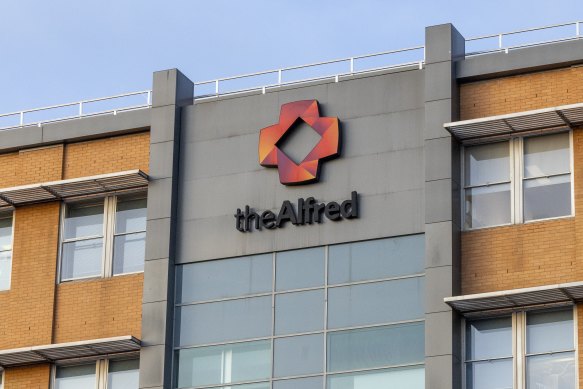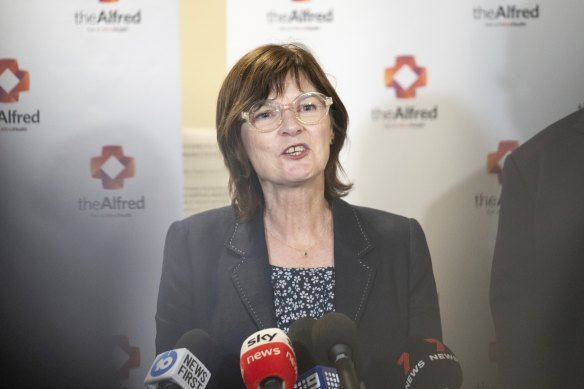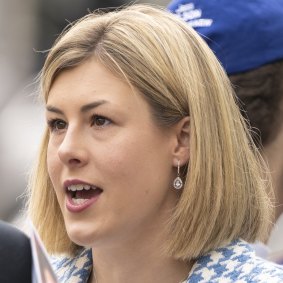Major Melbourne hospitals left counting cash weekly as budget constraints hit home
By Rachel Eddie and Annika Smethurst
Alfred Health has been forced to scrutinise its available cash on a weekly basis while Monash Health has eaten into its reserves to provide care because of “reduced sustainability funding” from the state.
The dire state faced by the big health providers is revealed in questionnaire responses to parliament’s public accounts and estimates committee, which will next week question the Department of Health and Health Minister Mary-Anne Thomas on their budget constraints.

The Alfred hospital houses one of Melbourne’s major trauma services.Credit: Wayne Taylor
The Age on Thursday analysed 65 annual reports from health services that were tabled in parliament, finding that more than half missed their targets for having enough cash for their day-to-day work.
Alfred Health – which runs The Alfred, Caulfield Hospital and Sandringham Hospital – has separately told the committee it had to push the state to provide the necessary funding to continue services, while undertaking the weekly cash monitoring.
To manage the risk, the service said it advocated for funding to align with the delivery of services at quarterly performance meetings.
While the May budget tipped a record $13 billion into the public health system, services warned that new rules locking them into budgets could lead to bed closures and surgery delays. It prompted the state to pour an extra $1.5 billion into health funding and a missive from Treasurer Tim Pallas that cash could not keep flowing like it has.

Health Minister Mary-Anne Thomas.Credit: Penny Stephens
The government also established Hospitals Victoria to work with health services to manage their budgets.
Pallas on Friday tabled the quarterly financial report for the state, which showed total expenses for the three months to September 30 hit $24.9 billion.
The $1.8 billion increase compared with the same time last year was attributed to the cost of delivering healthcare, borrowing costs, interest rates and the cost of public-sector wages following new enterprise agreements.
Total expenses were $335 million above the quarterly expectation, amounting to 25.3 per cent of the budget estimate for the year.

Treasurer Tim Pallas, pictured last month, tabled the quarterly financial report on Friday.Credit: Joe Armao
The report warned that caution needed to be taken in using quarterly figures to project the potential annual outcome for 2024-25 because revenue is uneven through the year.
Monash Health – which includes Monash Children’s Hospital, Moorabbin Hospital, Dandenong Hospital and Casey Hospital – in its responses to the public accounts and estimates committee said its total revenue was down 4 per cent compared to last year, which it blamed on “a reduction in financial sustainability funding provided by the Department of Health”.
It said this had no impact because cash surpluses were used to ensure continued patient care, and payments to suppliers and employees.
The health service held $226.8 million in cash at the end of June, compared to $501.1 million the year prior. It had just two days’ worth of cash available on average through the year, and posted an operating deficit of $328.97 million.
Monash Health, which covers a multicultural patch of south-east Melbourne with new migrants, also had an increase in patients ineligible for Medicare, which also put pressure on cash flow.
Overall, the 65 entities analysed by The Age on Thursday posted a total net operating loss of $937.023 million compared to an operating surplus of $27.748 million across the same facilities a year earlier.
An Alfred Health spokesman said that variations in its financial position did not affect patients.
“While we continue to face the same inflationary pressure as others, we remain focused on returning a balanced budget in 2024-25 and providing more support to our community than ever before.”
A government spokeswoman said health systems globally remained under pressure from COVID-19 with record demand, but was confident more health services would break even this year.
“We’ll always back our hardworking doctors, paramedics and nurses and midwives, and since coming to government we’ve grown our public health workforce by 50 per cent.
“Only Labor invests in our health system.”

Opposition finance spokeswoman Jess Wilson.Credit: Eamon Gallagher
The quarterly financial report tabled by Pallas on Friday also showed Victoria had posted a $1.7 billion deficit in the three months to September, which was an $800 million improvement on the previous year.
Net debt increased by $7.4 billion to $140.7 billion in the quarter.
A Victorian government spokesman said the economy was “booming”, with growth in business investment, employment and population.
“Our fiscal strategy is delivering the foundations for economic growth, setting Victoria’s future up strongly and allowing us to continue to deliver the services and infrastructure Victorians rely on.”
The opposition’s finance spokeswoman, Jess Wilson, said the state’s financial position was “deteriorating”.
“This report confirms interest repayments are up, employee expenses are up, the tax burden is up, and net debt is growing by a staggering $80 million each and every day,” Wilson said.
Start the day with a summary of the day’s most important and interesting stories, analysis and insights. Sign up for our Morning Edition newsletter.
correction
A graphic in this story incorrectly stated that Tallangatta Health Service had an operating deficit of $69m. The figure was in fact $690,000.